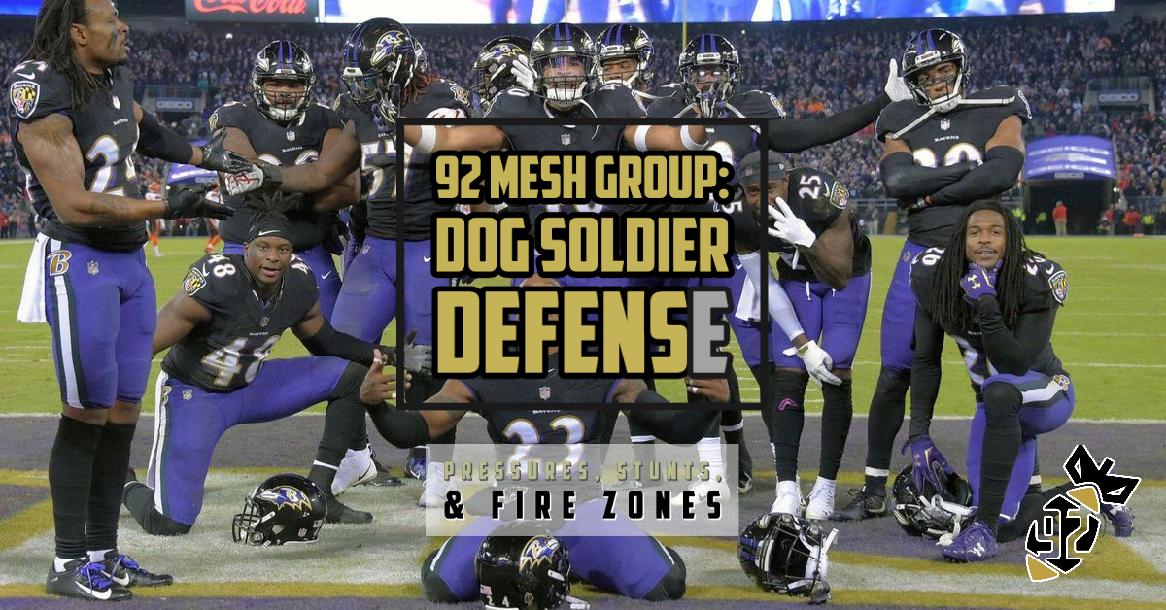Your
immune system is an amazing machine. It’s responsible for keeping your
body safe from outside invaders like viruses, bacteria, fungi, and
toxins.
There are two main parts of your immune system: the part you were
born with (innate or non-specific system) and the part you develop from
exposure to the environment (adaptive acquired, or specific system).
Your immune system is made of various organs, cells, and proteins –
skin cells, blood, bone marrow, tissues, and organs like the thymus and
lymph glands.
A strong immune system is your best defense against illness and
infection. Without it, you would have no way of fighting off harmful
substances or changes within the body.
Your immune system has three main tasks:
To fight pathogens (disease-causing “germs”) like viruses, bacteria, fungi or parasites and get them out of your body
To recognize and neutralize harmful substances from the environment
To fight disease-causing changes in the body, like cancer cells
Your immune system is activated by antigens – things the body doesn’t
recognize as belonging there. These are proteins on the surfaces of
bacteria, viruses, and fungi.
When the immune system cells come into contact with these antigens, a
whole series of processes are stimulated in your immune system.
The good news is that once your immune system comes in contact with a
germ, it will recognize that germ if it sees it again. This is why
vaccines work to protect you against certain diseases.
In this article, we’ll take a look at the top all-natural and safe
immune boosters that everyone can take advantage of to strengthen the
immune response, increase resistance to disease and infection, and help
recover more quickly.
Let’s begin!
Get Plenty of Sleep
Not getting enough sleep can lower your immune response and leave you more likely to succumb to infection.
In a study of 164 adults, the ones who slept less than six hours a
night proved more likely to catch a cold than those who slept longer.
When you’re sleep-deprived, your body makes stress hormones like
cortisol to keep you awake and alert – and that can suppress your immune
system.
And you may also take longer to recover if you’re sleep-deprived.
That’s because your body can’t make enough antibodies to fight off
diseases if you’re not rested.
Your body also releases special proteins (cytokines) that help your
immune system – but they only do that while you’re asleep. Your body
does a lot of healing and regenerating while you’re asleep.
Typical adults should try to get seven or more hours of sleep daily to function properly.
Teens need eight to ten hours a night and younger children and infants need to get up to 14 hours of sleep to be at their best.
People who got a full eight hours of sleep had higher levels of
T-cells than those who slept less, according to a 2019 study. And a 2015
study found that those who get seven hours of sleep are four times less
likely to come down with a cold than those who were sleep-deprived.
Most modern people don’t get enough sleep, which is a shame because it’s an easy fix to a common problem.
Some tips for getting a good night’s sleep include limiting your
screen time starting two to three hours before your bedtime. The blue
light from the TV, computer screen, or cellphone has been shown to
disrupt your body’s natural sleep cycle (circadian rhythm) so shut them
all down.
Another thing to limit is caffeine use. If you’re having a tough time
getting to sleep, try skipping caffeine after noon. Even if you think
your body is used to it, a little caffeine can go a long way.
You can also try sleeping in a totally dark room that is cooler than
the rest of your home, as your body cools down when it’s ready to sleep.
Avoid highly stimulating books or conversations right before bed,
too. They get your adrenaline levels up and you’ll have more trouble
calming back down.
Go to bed at the same time every night, even on your days off, and have a set sleep schedule you follow before getting into bed.
If you’re still having trouble with your sleep, talk to your doctor.
Getting a good night’s sleep is essential to a healthy immune system,
as well as many other of your body’s systems. You can’t perform at your
best if you’re sleep-deprived.
Stay Active
Prolonged intense exercise has been shown to lower your immune
response – however, moderate exercise actually boosts that response.
Studies show that even one session of moderate exercise can increase
vaccine effectiveness in those with compromised immune systems.
“Working out is a powerful way to boost your immune system,” says
Mark Moyad, MD, MPH, Jenkins/Pokempner director of preventative and
alternative medicine at the University of Michigan Medical Center.
Exercise circulates your antibodies and white blood cells more
rapidly, which helps them detect germs more quickly. “Being active this
way also lowers stress hormones, which reduces your chances of getting
sick,” Moyad adds.
According to a recent study of over 1,000 people, those who exercised
at least five days a week had almost half the risk of coming down with
the common cold than the more sedentary folks.
Regular moderate exercise can reduce inflammation, too, and that is
known to improve your immune system. Exercise can also help your immune
cells to regenerate regularly.
Examples of moderate exercise include 30 to 60 minutes of brisk
walking, jogging, swimming, steady bicycling, and light hiking three to
five times a week.
Notice that most of these are associated with the outdoors. There’s a good reason for taking your exercise outside.
Sunlight can stimulate your T-cells, special parts of your immune
system that help fight off infection. And being outside brings you into
contact with phytoncides and other plant products that can boost your
immune function. It also boosts Vitamin D levels in your body, which
helps your immune system further.
You should also be doing strength training exercises twice a week to
stay at your healthiest. The CDC (Center for Disease Control and
Prevention) recommends two and one-half hours of moderate-intensity
exercise every week as well as one hour and fifteen minutes of
high-intensity aerobic exercise.
So, you should exercise regularly and get enough sunlight to boost your immune system and increase your overall health.
Eat Whole Plant Foods
Today’s processed diet is a major cause of inflammation in the body.
Our ancestors ate more raw fruits and vegetables and doctors have proven
this is a healthier diet for your immune system (as well as other
systems in your body).
Whole plant foods are rich in antioxidants and nutrients that strengthen your immune system.
Registered dietician Julia Zumpano, RD, LD, had this to say about
eating your fruits and vegetables: “Try to eat a wide variety of foods
and aim to eat fruit and vegetables from every color of the rainbow.”
Eating a colorful diet is not only artistically pleasing, but fresh
fruits and veggies are far better for you than processed foods and
supplements.
Protein is also needed for immune health. Amino acids help build and
maintain immune cells and a low-protein diet may reduce your body’s
ability to fight off infection.
In a 2013 study, mice with a diet of only 2% protein were more
severely affected by flu than mice who ate a normal (18% protein) diet.
There are three main vitamins needed by your immune system: Vitamin C, Vitamin B6, and Vitamin E.
Vitamin C is one of the essential vitamins needed by your immune
system. It’s important for you to get plenty of natural Vitamin C from
your diet because your body doesn’t store that vitamin.
Anything you don’t use is flushed from the body by your kidneys.
The good news is that you can easily get enough Vitamin C from food
without spending money on supplements. Fruits and vegetables rich in
Vitamin C include citrus fruits (and their juice), strawberries, bell
peppers, broccoli, kale, and spinach.
Another immune system-boosting vitamin is B6 or pyridoxine. It’s a
water-soluble vitamin that isn’t made in your body, so you need to eat
the right foods to get enough for your immune system.
Natural sources of B6 include chicken or turkey and cold-water fish
like salmon or tuna. You can also get Vitamin B6 from green vegetables
and chickpeas (the main ingredient in hummus). So even if you’re vegan
you can get plenty of B6 to strengthen your immune system.
Vitamin E is a fat-soluble vitamin that is a powerful antioxidant.
It’s found in nuts, seeds, and spinach. You do need to be more careful
with Vitamin E because, since it’s stored in your fat, can actually
build up in your body to dangerous levels.
Never take Vitamin E supplements unless your doctor specifically tells you to do so.
If you’re older or feeling particularly tired, you might also have
your doctor check your Vitamin D levels. Most people get enough Vitamin D
from simply going outside, where sunlight stimulates your body to make
the vitamin.
However, if your doctor says you need more, taking 400 IU daily has
been shown to increase disease-fighting cells like T-cells. Foods that
contain Vitamin D include fatty fish like tuna, mackerel, and salmon,
beef liver, cheese, and egg yolks.
Additional nutrients your immune system needs are zinc, folate, iron,
and selenium according to the Academy of Nutrition and Dietetics.
Getting these from your food is better than using supplements, but
you do need each of them to support your immune system. Eating more
whole plant foods can really improve your immune system.
Eat Healthy Fats
“80% of your immune system is found in your gut,” says Yufang Lin,
MD, of the Center for Integrative Medicine at the Cleveland Clinic, “so
when it’s healthy, we tend to be able to fight off infections faster and
better. When it’s not, our immune system is weaker and more susceptible
to fighting off infection.”
Healthy fats are those with anti-inflammatory properties, like the
ones found in olive oil, nuts, and fatty fish like salmon. These may
boost your body’s immune response by lowering inflammation.
Inflammation is a natural response to stress or injury, but chronic
inflammation, such as can be caused by a high-fat, highly-processed
diet, can suppress your immune system’s responses.
Olive oil has been scientifically linked to a lower risk of type 2
diabetes and heart disease. It’s highly anti-inflammatory and may help
your body fight off dangerous viruses and bacteria. Omega-3 fatty acids,
like the ones found in cold-water fish (like salmon) and chia seeds,
have also been shown to fight inflammation and support your immune
system.
In general, Dr. Lin recommends people focus on a Mediterranean style
of eating. That means a diet rich in fruits, vegetables, whole grains,
and healthy fats. “This eating pattern is high in nutrients such as
Vitamin C, zinc, and other antioxidants shown to help reduce
inflammation and fight infection,” she explains.
Adults between 65 and 70 years old who followed a Mediterranean diet
showed small increases in disease-fighting cells (such as T-cells)
according to a 2018 study published in Frontiers in Physiology.
Healthy fats can help stimulate your immune system and boost your body’s response to disease or infection.
Eat Probiotic-Rich Foods
Fermented foods like yogurt, kimchi, sauerkraut, kefir, and natto are
rich in helpful bacteria called probiotics. These are the same bacteria
that live in your gut and help your digestive system work properly.
Gut health and immunity are closely interrelated. Research has
suggested that a healthy gut bacteria population can help your immune
system tell the difference between healthy body cells and harmful
invaders.
In one study, children who drank just 2.4 ounces (70 ml) of fermented
milk daily had around 20% fewer childhood infectious diseases compared
with the control group who didn’t drink probiotics. If you don’t
regularly eat fermented foods, a probiotic supplement may be a good
idea.
In another study of people infected with rhinovirus, those who took a
supplement of the bacterium Bifidobacterium animalis had a stronger
immune system response and lower levels of the virus in their nasal
mucus than the control group did.
A typical daily dose of probiotics is between 1 and 10 billion CFUs
(colony-forming units) daily. The key is to take these probiotic
supplements or foods consistently to maintain a healthy gut and support
your immune system.
It’s best to eat probiotic-rich foods like yogurt or sauerkraut, but
if you can’t include those in your regular diet, you should consider
supplements to improve your immune response.
Limit Sugar Intake
The latest research states that added sugars and processed foods can
contribute significantly to obesity, which can in turn reduce your
immune system response.
One study of around 1,000 people found that obese people who got
their yearly flu shot were twice as likely to still get the flu
afterward than non-obese people who got their vaccine.
Cutting your sugar and processed food intake can lower inflammation.
It also aids in weight loss, of course, and reduce your risk of
developing conditions like heart disease or type 2 diabetes.
And since all three conditions – obesity, diabetes, and heart disease
– are known to weaken your immune system, “curbing your sugar intake is
an important part of an immune-boosting diet,” according to Healthline.
Try to limit your sugar intake to 5% or less of your total daily
caloric intake. If you’re on a 2,000 calorie a day diet, for example,
you should get less than two tablespoonful’s (25 grams) of sugar in one
day.
Reducing your sugar and processed foods can not only help you lose weight but can improve your immune system.
Stay Hydrated
Dehydration is when your body doesn’t get enough water. It can reduce
your physical performance, mood, focus, digestion, and heart and kidney
function. These can also lower your resistance to disease.
Your first hint that you may not be getting enough water is a common
feeling – thirst. You may also get a headache. You should be drinking
enough fluid to create a pale-yellow urine.
Water is best because it doesn’t have any added calories. Try to
avoid too many sweetened drinks like fruit juice, sweet tea, or sodas.
While those can help hydrate you, the added sugar can reduce your
immune response and negate the positive effects of drinking enough
fluid.
Staying hydrated can boost your immune health. Water helps your body
make lymph, which carries immune system cells like white blood cells.
Try eating hydrating foods like cucumbers, melon, or celery.
Also, try to avoid overdoing diuretic or water-reducing substances like caffeine.
As a general guideline, you should drink whenever you’re thirsty and
continue drinking until your body no longer signals it needs liquid. You
may need more fluid if you exercise, work outside, or live in a hot
climate.
Remember that as you age, your body is less able to signal its needs
for liquid, so older people are less likely to drink enough. If you’re
over 55, you should make sure you drink enough even if you don’t feel
particularly thirsty.
Although hydrating doesn’t have a direct effect on your immune
system, it’s important to your overall health and thus, important to
your immune system.
Reduce Stress
There’s a strong link between your immune system and your mental health. Stress and anxiety make poor germ fighters.
Studies have shown that just having anxious thoughts can lower your immune response in as little as half an hour.
Constant stress makes it even harder to fight off viruses and
bacteria. Stress makes your body produce cytokines, molecules that
trigger inflammation that can reduce your immune response.
“When you’re under chronic stress or anxiety,” says Dr. Mark Moyad,
“your body produces stress hormones that suppress your immune system.”
Research at Carnegie Mellon University found that if you’re stressed, you’re more likely to come down with the common cold.
In one study, healthy adults were exposed to the cold virus, then
quarantined for five days and monitored. Those who reported stress were
twice as likely to get sick.
“In addition,” Dr. Yufang Lin says, “People who are stressed are less
likely to pay attention to other healthy habits, like eating right and
getting enough sleep, which can affect immunity.”
There is also evidence that sorrow if it lasts a long time, can lower
your body’s immunity. This effect can last for up to six months – and
can go on even longer if your grief is deep or doesn’t ease.
Talk to a doctor or therapist if you suffer from anxiety or grief
that doesn’t seem to be letting up in a reasonable time period.
Although you can’t avoid stress or sorrow, you can use strategies to
manage it better. A 2012 study in Annals of Internal Medicine found that
adults who either had a daily exercise routine or performed mindfulness
meditation were less likely to get sick with a respiratory infection –
or that, if they did get sick, missed fewer days at work.
Exercise increases the release of endorphins, hormones that reduce
stress, and create feelings of pleasure. This makes it a great way to
fight off stress. Dr. Lin says, “Since stress negatively impacts our
immune system, this is another way exercise can improve immune response.
Mindfulness is a way of focusing your thoughts on the here-and-now
instead of worrying about the future or stressing over the past.
Stress can negatively affect your immune system but managing that stress can moderate or negate that effect.
Regular exercise helps, as does mindfulness meditation that focuses
your thoughts on what’s going on immediately around you instead of
letting you keep worrying.
Quit Smoking
Smoking damages your lungs, which are two of the main gateways into
your body. Nicotine and marijuana both decrease your lungs’ ability to
fight off infection and both increase inflammation. And yes, vaping
still counts as smoking if you’re talking about your immune system.
“Chemicals released by cigarette smoke – carbon monoxide, nicotine,
nitrogen oxides, and cadmium – can interfere with the growth and
function of immune cells like T-cells, cytokines, and B-cells,” per a
2016 review in Oncotarget. Smoking also makes infections worse,
especially if they’re in the lungs (like pneumonia, flu, and
tuberculosis).
And overdoing the booze even once can slow your body’s ability to
fight off germs for a full 24 hours. Over time, drinking too much can
damage your body’s ability to repair the damage. This is why people who
drink are more prone to illnesses like liver disease, pneumonia,
tuberculosis, and certain cancers. If you’re going to indulge, stick to
one drink a day for women and two drinks a day for men. Moderation in
all things.
Smoking and drinking too much are harmful in many ways. One of the things you may not have considered is your immune system.
There is a multitude of ways to stop smoking and drinking. If you’re
having difficulty, see your doctor for some expert help to get yourself
healthy again.
Conclusion
Your immune system is an amazing part of your body. It recognizes
germs like viruses, bacteria, and fungi and fights them off. It also
neutralizes harmful substances and fights disease-causing changes in the
body.
“Think of the immune system as an orchestra,” says Lauren Bedosky for
Everyday Health. “For the best performance, you want every instrument
and every musician in the orchestra to perform at its best.”
You don’t need one musician suddenly playing double speed or one
instrument blaring out at top volume. The same goes for your immune
system.
There are many things you can do to boost your immune system and help
your body fight off disease. Some of these you’ve heard all your life:
exercise regularly, stop smoking and drinking, get enough sleep, and
manage your stress. One additional method you’re probably already doing
is to keep your chronic conditions under control.
“Chronic conditions like asthma, heart disease, and diabetes can
affect the immune system and increase your risk of infection,” says
Bedosky.
A 2019 study in Current Diabetes Review found that people with type 2
diabetes who don’t keep their blood glucose levels under control may
create a chronic, low-grade inflammatory response that weakens their
immune systems.
“If you manage your chronic conditions better,” says Dr. Lin, “you’ll
free up more reserves to help your body fight off infection.” So, stay
on top of your chronic conditions – take your medications, keep your
doctor visits, and keep up any healthy habits that keep that condition
at bay. “Your immune system will thank you,” says Bedosky.















